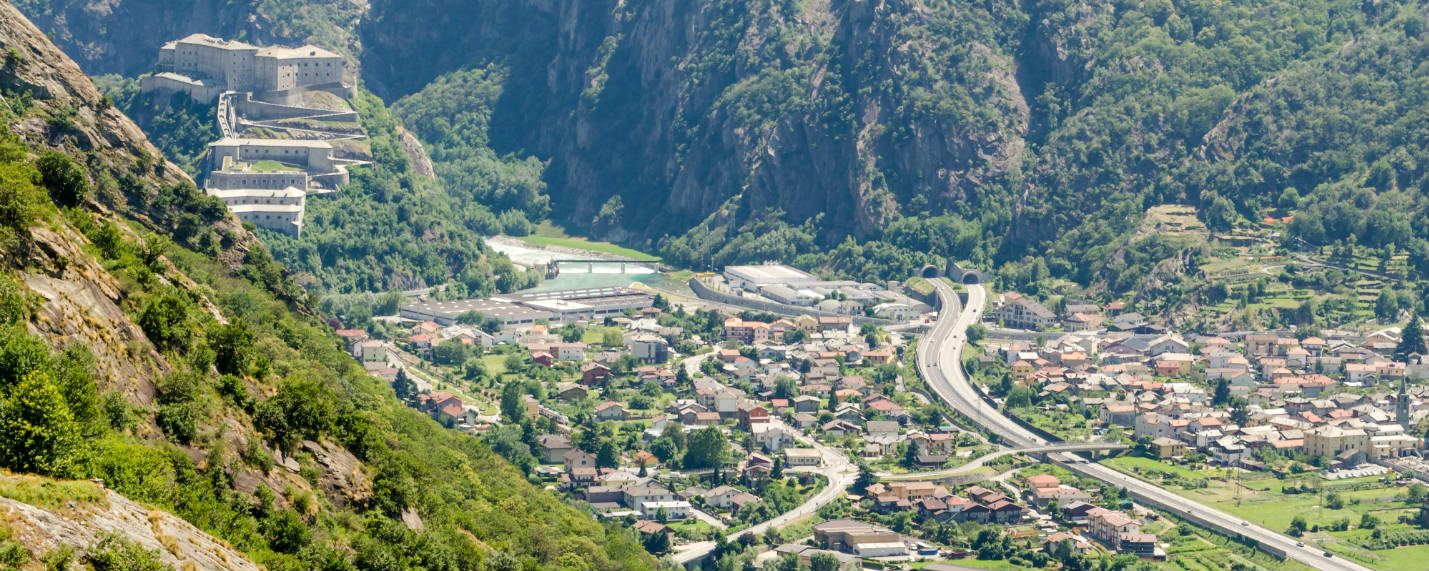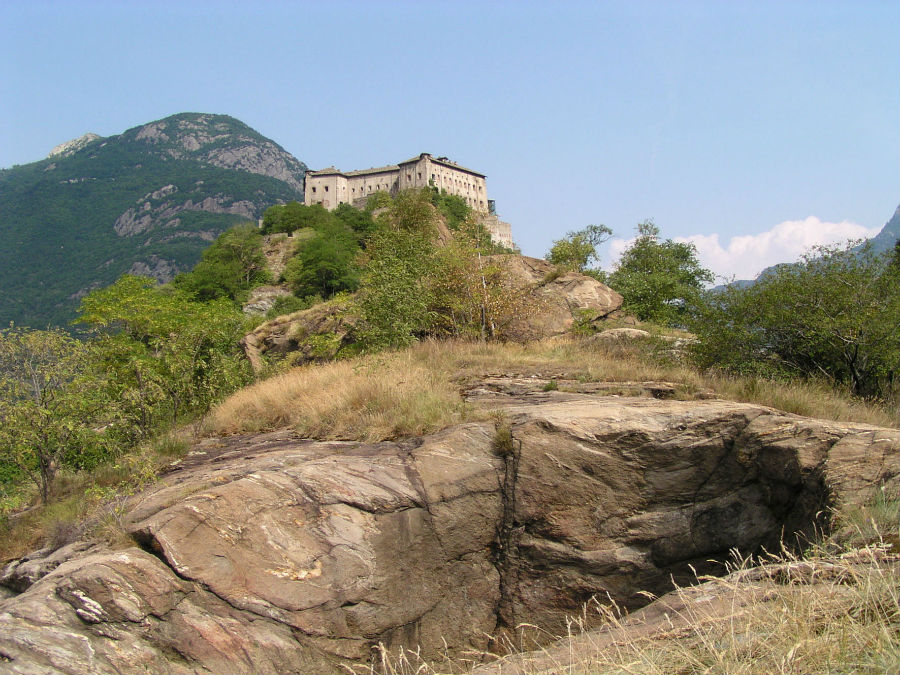The ArchaeoPark is one of the sites of rock art among the most important of the Aosta Valley. Access near the cemetery. The village of Bard, place full of history and culture, alongside its architectural beauties (the homonymous fort, the stately homes) landscape aspects of remarkable value. The area in front of the village is in fact morphologically constituted by large rocky humps that reveal the signs of’erosive action of the Balteo glacier that, up to about 10,000 years ago, flowed along l’axis vallivo main colmandolo, with powerful thicknesses of ice. At the geosite of Bard it’s possible to observe different geological phenomena: the outcomes of a landslide, boulders, marmitte dei giganti, Dossi montonati besides examples of rock art.
The landslide of Bard of 1912 is due to a collapse in Massa, whose volume was estimated at 160,000 m3. It’s constituted by large boulders of cubic shape and prismatic shape. The event, the most recent testimony of the landslide activities, is surely more ancient that doesn’t affect not only the site reported.
The boulders are stone blocks of size metrics transported from the glacier also for kilometers and then deposited in the phase of withdrawal. This process would justify the presence of rock blocks of different composition from the substrate on which they are located.
The marmitte dei giganti are fossil forms modeled by the abrasive action exerted by the water charges of debris from the glacier in regressive step. The pebbles, transported by the waters of the torrent subglaciale, due to the turbulent motion and by the effect of mechanical processes exercised by continuous collisions, behave as trapani creating enormous cavity.
The dossi montonati derive their origin from the pressure exerted by the glacial mass and from the grinding action performed by considerable quantities of detritus that have modeled the substrate by shaping rocky Dossi, elongated according to the direction of movement of the glacier: rounded above and on the side facing upstream, irregular toward the valley.
The meaning of rock engravings of Bard remains doubt. The cups, small hollows dug into the rock, probably from the Bronze age, would be Maps landmarks. The serpent, 3000- 2700 B.C., seems to draw the symbol of male fecundity. The particular elongated lustratura, known as “chute women”, is probably formed over the centuries by a propitiatory practice of fecundityà women consisting in sliding seats on the rock.
Mountain Trail: it is recommended to wear appropriate footwear.



